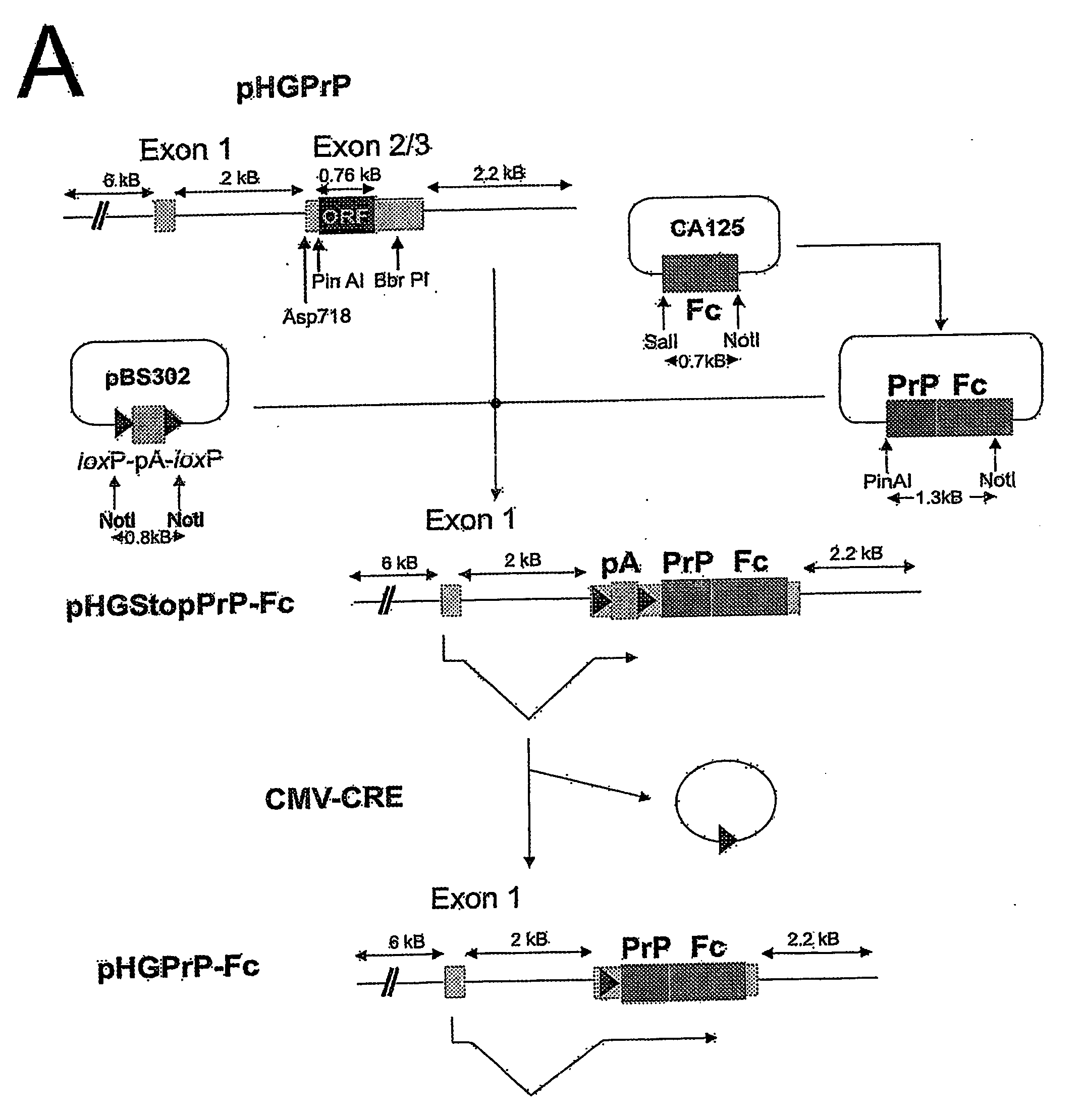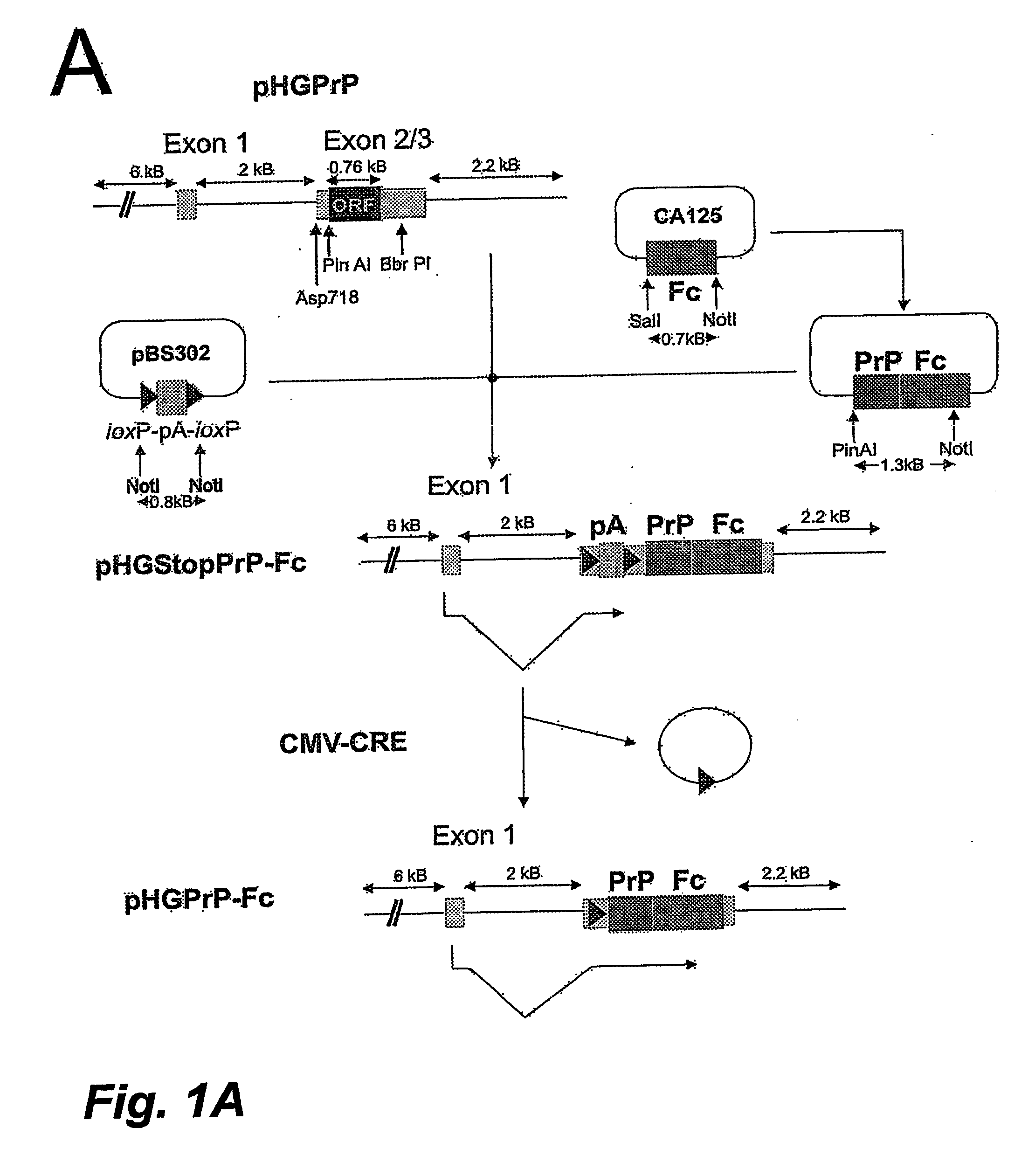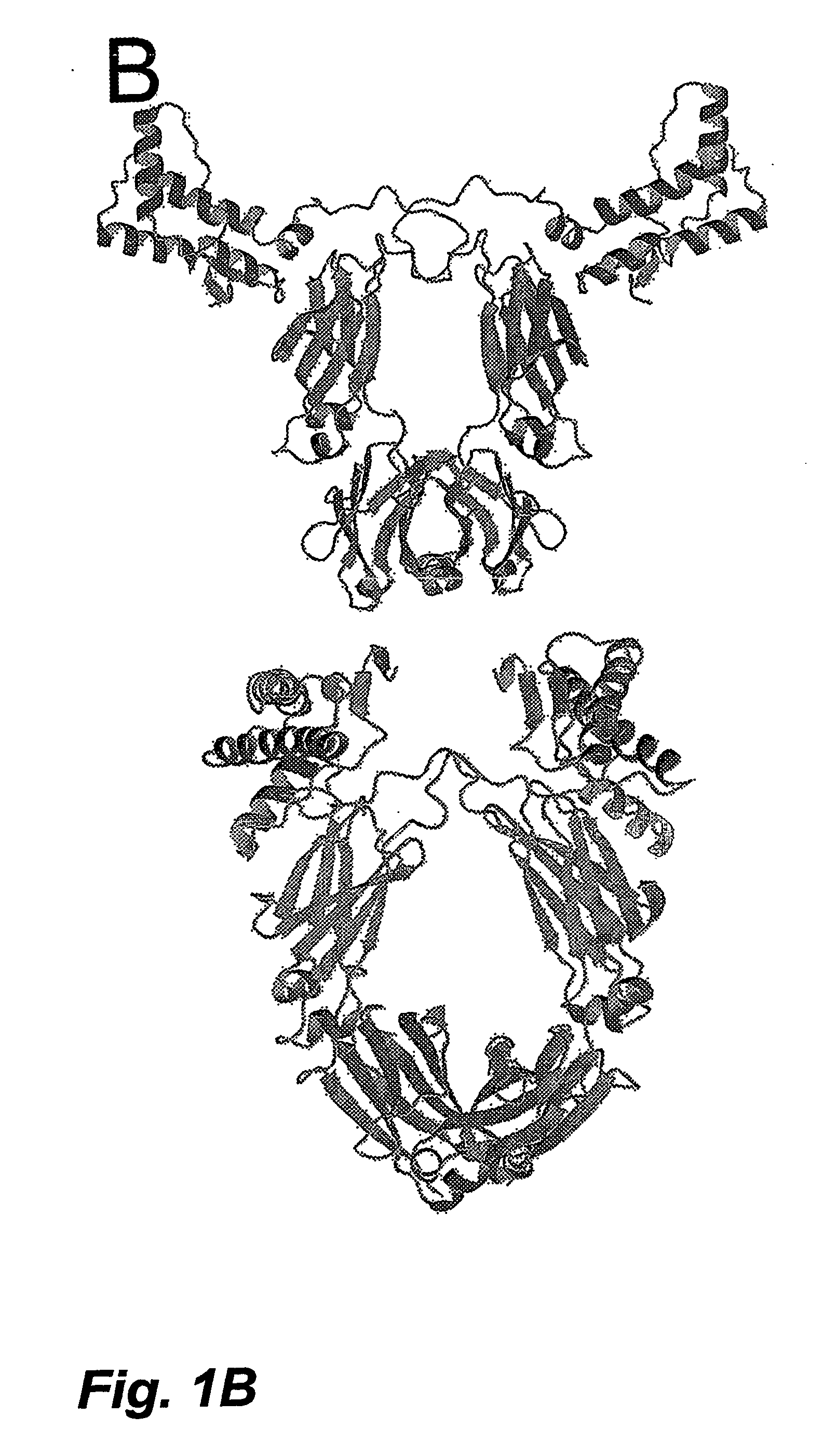Soluble Hybrid Prion Proteins And Their Use In The Diagnosis, Prevention And Treatment Of Transmissible Spongiform Encephalopathies
a spongiform encephalopathy and soluble hybrid technology, applied in the field of soluble hybrid proteins, can solve the problem of not being able to determine its biochemical fate directly, and achieve the effect of efficient capture of prps
- Summary
- Abstract
- Description
- Claims
- Application Information
AI Technical Summary
Benefits of technology
Problems solved by technology
Method used
Image
Examples
example 2
Infection of Transgenic Mite Expressing a Soluble Dimeric Prion Protein. Soluble PrP is not Converted into an Disease Specific PrP Form
[0128]To investigate whether PrP-Fc2 can be converted into a self-propagating “PrP-FcSc” form, the PrP-Fc2 transgene was bred in Prnpo / o mice (Büeler et al., 1992) which are resistant to scrapie (Bueler et al., 1993; Sailer et al., 1994). Adult tg550-Prnpo / o mice (tg5500 for short), which express PrP-Fc2 but lack endogenous PrPc, were inoculated with RML prions intracerebrally (i.c.) or intraperitoneally (i.p.) with 30 μl and 100 μl, respectively, of brain homogenate containing 3×102 to 106 LD50 infectious units of Rocky Mountain Laboratory strain (RML, passage 5.0) scrapie prions prepared as described previously (Klein et al., 1997). In order to uncover possible dose-dependent effects, saturating as well as rate-limiting doses of prions were administered.
[0129]Tg550° mice were healthy at >450 days post inoculation (dpi) by the i.p or i.c. route, whe...
example 3
PrP-Fc2 antagonizes PrPSc Accumulation in Brain and Spleen of Transgenic Mice
[0131]tg550+, tg588+, and their wild-type littermates were inoculated with a low, rate-limiting dose of prions intracerebrally or intraperitoneally. Deposition of PrPSc was analyzed by NaPTA-enhanced Western blotting (Safar et al., 1998). Phosphotungstic acid (NaPTA) precipitation was performed as described (Heppner et al., 2001; Safar et al., 1998) with 500 μg or 1 mg of 10% tissue homogenate (brain and spleen). Precipitates were resuspended in 0.1% Sarcosyl. NaPTA precipitates of brain and homogenates were run on SDS-PAGE (5% stacking and 8, 12 or 16% resolving) and transferred on nitrocellulose (Schleicher & Schuell) by wet blotting. Membranes were blocked with 5% Top-Block (Juro) in Tris-buffered saline-Tween (TBS-T) at room temperature (RT) for 1 hour, incubated in 1% Top-Block in TBS-T with ICSM18 (for PrP) and PrP-FC2 detection or an goatanti-human IgG (Rockland) (for PrP-Fc2) 1 hour at RT or overnig...
example 4
PrP-Fc2 Binds to PrPSc In Vivo and In Vitro
[0134]In a first experiment, tosyl-activated paramagnetic beads were coupled covalently with (1) antibodies to human Fcγ1, (2) protein A, or (3) antibodies to human IgA. The two former reagents were expected to bind the Fcγ portion of PrP-Fc2, while the third served as a negative control. When incubated with native brain homogenate of scrapie-sick PrP-Fc2 mice, reagents 1 and 2 (but not reagent 3) precipitated a protein complex that contained protease-resistant PrPSc (FIG. 4A). Instead, only background levels of PrPSc were captured from scrapie-sick wild-type mice. Therefore, surface-immobilized reagents to human Fcγ1 precipitate multiprotein complexes that contain protease-resistant PrP. This provides a first line of evidence that PrPSc and PrP-Fc2 interact in vivo.
Surface-Immobilized PrP-Fc2 Efficiently Captures PrPSc in Pull-Down Assays
[0135]To trap PrPSc with PrP-Fc2, bound to a solid-phase matrix in vitro paramagnetic beads were couple...
PUM
| Property | Measurement | Unit |
|---|---|---|
| molecular weight | aaaaa | aaaaa |
| molecular weight | aaaaa | aaaaa |
| temperature | aaaaa | aaaaa |
Abstract
Description
Claims
Application Information
 Login to View More
Login to View More - R&D
- Intellectual Property
- Life Sciences
- Materials
- Tech Scout
- Unparalleled Data Quality
- Higher Quality Content
- 60% Fewer Hallucinations
Browse by: Latest US Patents, China's latest patents, Technical Efficacy Thesaurus, Application Domain, Technology Topic, Popular Technical Reports.
© 2025 PatSnap. All rights reserved.Legal|Privacy policy|Modern Slavery Act Transparency Statement|Sitemap|About US| Contact US: help@patsnap.com



